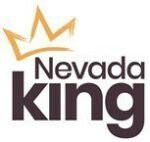Uncategorized
Nevada King Gold drills 2.45 g/t gold over 102.1 metres at Atlanta, Nevada
Nevada King Gold Corp. [NKG-TSXV; NKGFF-OTCQX] reported assay results from seven vertical reverse circulation (RC)…

Nevada King Gold Corp. [NKG-TSXV; NKGFF-OTCQX] reported assay results from seven vertical reverse circulation (RC) holes and one vertical core hole recently completed at its 5,166-hectare (51.6 km2), 100%-owned Atlanta gold mine project, located in the prolific Battle Mountain trend, 264 km northeast of Las Vegas, Nevada. Highlights: Holes released today are located 300 metres northwest of the Atlanta pit along Section 22-17N, where drilling continues to extend thick, high-grade oxide mineralization northward along the West Atlanta graben (WAG). Drill hole AT23WS-23 intercepted 102.2 metres of 2.45 g/t gold, including 12.2 metres of 8.78 g/t gold, while drill hole AT22WS-1 intersected 65.5 metres of 1.52 g/t and bottomed in mineralization.
Bounded on its east side by the West Atlanta fault, the WAG is approximately 150 metres wide and contains subhorizontal oxide mineralization ranging from 50 metres to 200 metres thick hosted within silicified Tertiary volcanics and underlying silica breccia that developed in strongly decalcified Ordovician dolomite along the unconformable contact. Gold-bearing fluids were channeled into the unconformity via high-angle faults that cut the stratigraphy and also localized felsic intrusive dikes that display a very close spatial relationship to the gold zone.
Grades and mineralized thicknesses currently being encountered within the WAG show strong potential for substantially increasing the overall gold/silver resource at Atlanta. The Gustavson 2020 resource model primarily focused on the Atlanta mine fault zone (AMFZ), which is immediately adjacent to the WAG on its eastern side, while drill density within the WAG itself was in many cases insufficient for providing the lateral continuity of mineralization necessary for establishing resources.
A good example of this is seen along Section 22-17N, where historical hole DHRI-11-15C had no other hole eastward along the section to tie to. Consequently, the Gustavson 2020 resource model extended the thin, low-grade intercept (0.28 g/t Au over 67.1 m) to the east and gradually pinched it out, showing no evidence for more resource to the east. In stark contrast, today’s banner intercept in AT23WS-23 (102.2 m at 2.45 g/t Au), located only 50 metres east of DHRI-11-15C, is considerably thicker and nine times stronger in terms of grade compared with DRHI-11-15C, significantly changing the company’s interpreted resource potential along this section. Consequently, the current drilling program is centred on expanding the WAG mineralization northward, southward and to depth.
Cal Herron, exploration manager, commented: “Section 22-17N generally mimics the structural, stratigraphic and mineralization patterns seen in adjacent Section 22-16N and in sections previously released farther south along lines 22-5N through 22-10N. We are seeing a northward narrowing of mineralization along the AMFZ starting at sections 22-16N and 22-17N, and this is probably due to the northerly trending Atlanta King fault having been faulted out just north of the pit. At the same time, we see a new high-grade zone developing within the WAG between the West Atlanta No. 1 and West Atlanta No. 2 faults. The thick, higher-grade intercept in AT23WS-23 is more typical of intercepts seen within the narrow graben blocks between the Atlanta King and East Atlanta faults, so the West Atlanta fault No. 1 may be the western analogue of the Atlanta King fault, which acts as an important fluid conduit responsible in part for the high-grade mineralization seen along the eastern side of the AMFZ.”
Nevada King is the third-largest mineral claim holder in the state of Nevada, behind Nevada Gold Mines (Barrick/Newmont) and Kinross Gold. District-scale projects in Nevada King’s portfolio include the 100%-owned Atlanta mine, located 100 km southeast of Ely; the Lewis and Horse Mountain-Mill Creek projects, both located between Nevada Gold Mines’ large Phoenix and Pipeline mines; and the Iron Point project, located 35 km east of Winnemucca, Nevada.
The company is well financed with cash of approximately $20-million as of June, 2023.












